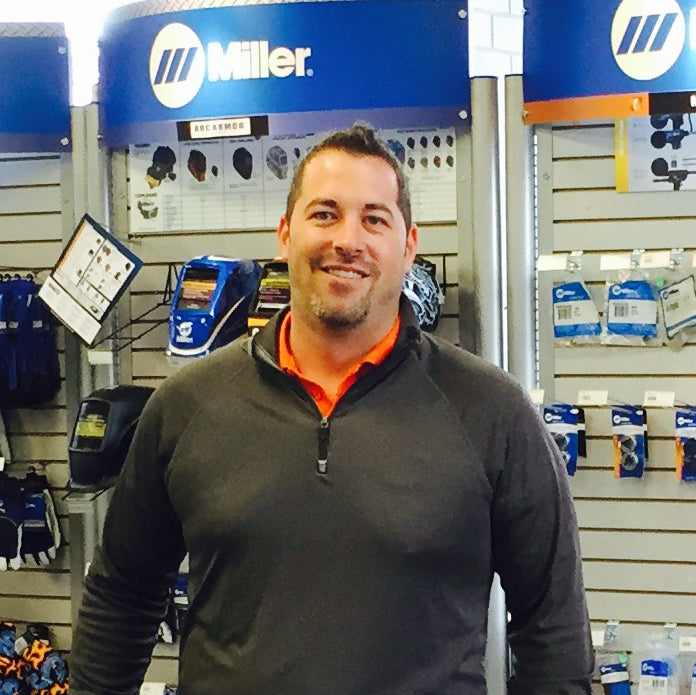From time to time, we’ll hear these whispers of an ongoing war: Plasma Cutters Vs. Oxy Acetylene, the great debate, the civil war among welders. It’s like there’s gangs of welders roving around with “Plasma Cutter” written on their leather jackets or “Oxy Acetylene” tattooed across their chest.
So, let’s settle this right here and now: Plasma Cutters Vs. Oxy Acetylene. We’ll take each through 5 different categories: Precision, Power, Portability, Versatility, and Price.
Precision
No one likes unnecessary clean up. Having a nice, clean cut can save you a lot of time. So which method does it better? Plasma cutters, by their very nature, are designed to leave as little mess as possible. In fact, most people don’t realize how high-tech Plasma Cutting really is. We’re literally using the fourth state of matter to slice our way through metal. It was complete science fiction 30 years ago. A Plasma Cutter adds energy to a neutral gas, causing it to become imbalanced. This creates a highly precise, powerful energy arc.
Oxy Acetylene torches, on the other hand, are fairly straightforward. Oxygen and fuel are used to create a reaction with the work piece, melting it into slag which gets blown away. Basically like taking a blowtorch to a chocolate bar. The resulting cut, while powerful, is not nearly as precise as a Plasma cutter and often requires extra clean up to make it look good.
Power
Plasma Cutters might have the precision, but power goes to Oxy Acetylene. It should be noted that each process has different material type limitations, but most experts will still agree Oxy Acetylene can cut a lot more than Plasma. Your heavy-duty Plasma cutters will slice through material up to 2 inches thick. While the cuts may not be as clean, Oxy Acetylene will carve through material up to 24 inches thick. That’s 1,200% thicker material than the Plasma Cutters can handle.
Portability
With the creation of Inverter Technology, Plasma Cutters have become much more portable. A Plasma Cutter unit can be transported in the back of a truck and moved anywhere you need to go. Most experts like to point out that Plasma Cutters do require electricity, which could potentially be a limitation. However, since most welding machines also require electricity (either a plug or a generator), unless you’re stranded on a desert island, this shouldn’t hold you back.
If you ARE stranded on a desert island, hopefully you’ve brought along your Oxy Acetylene equipment. Oxy Acetylene is one of the most portable items in welding. With a couple gas tanks and a torch, you can cut almost anywhere. No electricity required.
Versatility
Here’s where a clear winner starts to get hazy. See both methods can be used for different effects. With a Plasma Cutter, you can stack cut, bevel, do shape cutting, gouge and pierce since it leaves such a clean, precise cut. With a special combination Oxy Acetylene torch, you can heat, braze, solder, gouge, rise cut and blend metals. One clear advantage for Plasma Cutters is their ability to work on stainless steel and aluminum, which Oxy Acetylene can’t touch.
Price
Price all depends on what you’ll be doing. In up-front cost, a Plasma Cutter tends to be more expensive. However, if you’re doing a lot of work where you’ll need clean, precise cuts, Oxy Acetylene could cost you more over time (the price of gases, resources wasted on cleaning up cuts, etc.).
And The Winner Is…
…completely up to you. It all depends on what you need. For instance, jobs requiring clean cuts and the ability to use any type of metal could only be done with a Plasma Cutter. On the other hand, work that requires you to cut through 18-inch metal can only be done with Oxy Acetylene. For this reason, many welders have both Plasma and Oxy Acetylene as one usually can’t replace the other.
Below we’ve listed our favorite products for both methods to help you easily get started.
PLASMA CUTTERS:
OXY ACETYLENE:
 Victor Journeyman Welding & Cutting Outfit
Victor Journeyman Welding & Cutting Outfit
Harris Steelworker Deluxe Oxygen/Acetylene Welding & Cutting Outfit







